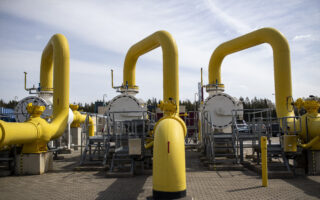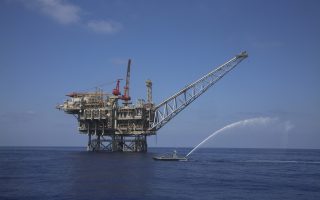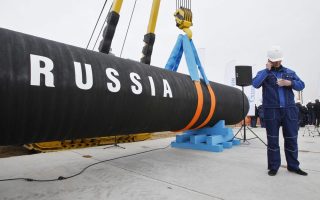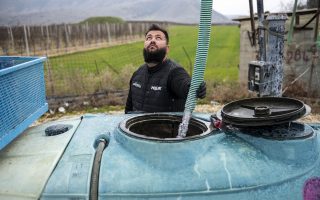How can Europe get gas if Russia’s supply is disrupted?
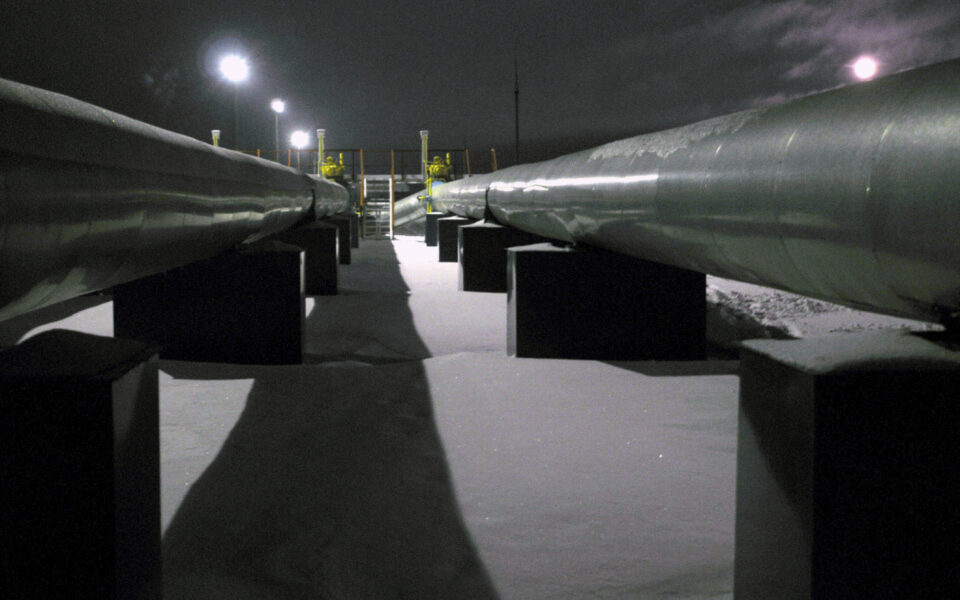
Pressure on Europe to secure alternative gas supplies increased on Thursday as Moscow imposed sanctions on European subsidiaries of state-owned Gazprom a day after Ukraine stopped a major gas transit route, pushing prices higher.
This follows Ukraine halting gas transit route to Europe on Tuesday, blaming interference by occupying Russian forces, the first time exports via Ukraine have been disrupted since the invasion.
The following outlines Europe’s options.
WHAT ARE THE KEY ROUTES FOR RUSSIAN GAS TO EUROPE?
Russia supplies about 40% of Europe’s natural gas, mostly by pipeline. Deliveries last year were around 155 billion cubic metres (bcm).
The Ukraine transit corridor mostly sends gas to Austria, Italy, Slovakia and other east European states.
Ukraine closed a key transit pipeline Sokhranovka on Tuesday that runs through Russian occupied territory in the east of the country. Kyiv has proposed diverting flows for Europe to another route, the Sudzha entry point, but Russia’s Gazprom said it was not technically possible to shift all volumes there.
Daily gas flows via Sokhranovka averaged 23 mcm so far in May, 20% lower than April, consultancy Rystad Energy said. Daily flows via Sudzha averaged around 70 mcm in May, close to its transit capacity of 77 mcm/day, although it could potentially be increased to 83 mcm/day, Rystad said.
Based on that assessment, it still leaves about 10 mcm/day of gas which needs to be redirected via other routes, where capacity seems to be full.
Russia and Ukraine disagree on how much of the gas that usually transits Ukraine can be handled by the Sudzha point.
European countries have been seeking to cut their reliance on Russian gas. Bulgaria and Poland have already been cut off from Russian supplies, after rejecting a Russian demand for a new payment method. But others, including Germany, still need Russian gas and are trying to refill depleted gas reserves.
Alternative routes to Europe which do not go via Ukraine include the Yamal-Europe pipeline, which crosses Belarus and Poland to Germany, and Nord Stream 1, which runs under the Baltic Sea to Germany.
The Yamal-Europe pipeline has a 33 billion cubic metre (bcm) capacity, around a sixth of Russian gas exports to Europe. Gas has been flowing eastward through the pipeline from Germany to Poland for some time.
Moscow has placed sanctions on the owner of the Polish part of the Yamal-Europe pipeline that carries Russian gas to Europe. However, Poland can manage without reverse gas flow on the Yamal pipeline, climate minister Anna Moskwa said on Thursday.
WHERE ELSE CAN EUROPE GET GAS?
Some countries have alternative supply options and Europe’s gas network is linked up so supplies can be shared, although the global gas market was tight even before the Ukraine crisis.
Germany, Europe’s biggest consumer of Russian gas which has halted certification of the new Nord Stream 2 gas pipeline from Russia because of the Ukraine war, could import gas from Britain, Denmark, Norway and the Netherlands via pipelines.
Norway’s gas export is set to rise by 8% this year to 122 billion cubic metres (bcm), possibly beating a record set five years ago, as the country ramps up deliveries, the Norwegian energy minister said on Monday.
Southern Europe can receive Azeri gas via the Trans Adriatic Pipeline to Italy and the Trans-Anatolian Natural Gas Pipeline (TANAP) through Turkey.
The United States will work to supply 15 bcm of liquefied natural gas (LNG) to the European Union this year, the transatlantic partners said last week.
US LNG plants are producing at full capacity. Analysts say additional US gas sent to Europe would mostly come from exports redirected from customers elsewhere.
Europe’s LNG terminals also have limited capacity for extra imports, although some European countries say they are seeking ways to expand imports and storage.
Germany is among the countries that want to build new LNG terminals. It plans to build two in a just two years.
In theory, that could allow enough LNG to be regasified to meet about a third of the supply Germany receives by pipeline from Russia, but Berlin would also need to secure supply in an already tight LNG market to feed them.
Poland, which meets about 50% of its gas consumption with Russian gas or around 10 bcm, has said it can source gas via two links with Germany.
They include a reverse flow on the Yamal pipeline, a link with Lithuania with an annual capacity of 2.5 bcm that will open on May 1, and via an interconnector with the Czech Republic for up to 1.5 bcm.
Another 5-6 bcm could be shipped via a link with Slovakia to be opened later this year.
In addition, Polish gas company PGNiG can import up to 6 bcm per year via the LNG terminal in Swinoujscie on the Baltic Sea, and it produces more than 3 bcm of gas per year in Poland.
In October, a pipeline allowing up to 10 bcm of gas per year to flow between Poland and Norway, will be opened.
Bulgaria, with annual gas consumption of about 3 bcm and with 90% of imports coming from Russia, has sealed a deal to receive 1 bcm of Azeri gas, but can only fully tap the contract after a gas pipeline with Greece becomes operational later this year.
A Greek source close to the matter told Reuters that Athens could help Sofia by reversing the flow of the TurkStream pipeline, a mechanism that has been used before. The pipeline brings Russian gas to Greece via the Black Sea, Turkey and Bulgaria.
ARE THERE OTHER OPTIONS TO COPE WITH A GAS SUPPLY CRUNCH?
Several nations could seek to fill any gap in energy supplies by turning to electricity imports via interconnectors from their neighbours or by boosting power generation from nuclear, renewables, hydropower or coal.
The European Commission said gas and LNG from countries including the United States and Qatar could this year replace 60 bcm of Russian supplies. By 2030, increased biomethane and hydrogen use could also help.
New wind and solar projects could replace 20 bcm of gas demand this year. A tripling in capacity by 2030 to add 480 GW of wind and 420 GW of solar energy could save 170 bcm a year.
Turning down thermostats by 1 degree Celsius could save an extra 10 bcm this year, while by 2030, replacing gas boilers with 30 million heat pumps could save 35 bcm, the Commission added.
Nuclear availability is falling in Belgium, Britain, France and Germany with plants facing outages as they age or are decommissioned or phased out.
Europe has been trying to shift from coal to meet climate targets but some coal plants have been switched back on since mid-2021 because of surging gas prices.
The European Commission said this month it planned to ban imports of Russian coal from August, meaning EU nations will have to seek alternative supplies from Australia, Colombia, the United States and other countries.
Germany has said it could extend the life of coal or nuclear plants to cut reliance on Russian gas.
German officials are also quietly preparing for any sudden halt in Russian gas supplies with an emergency package that could include taking control of critical firms, three people familiar with the matter told Reuters.
Many European countries have put in place measures to manage gas supply and even ration power in case Russian gas flows stop.
[Reuters]


